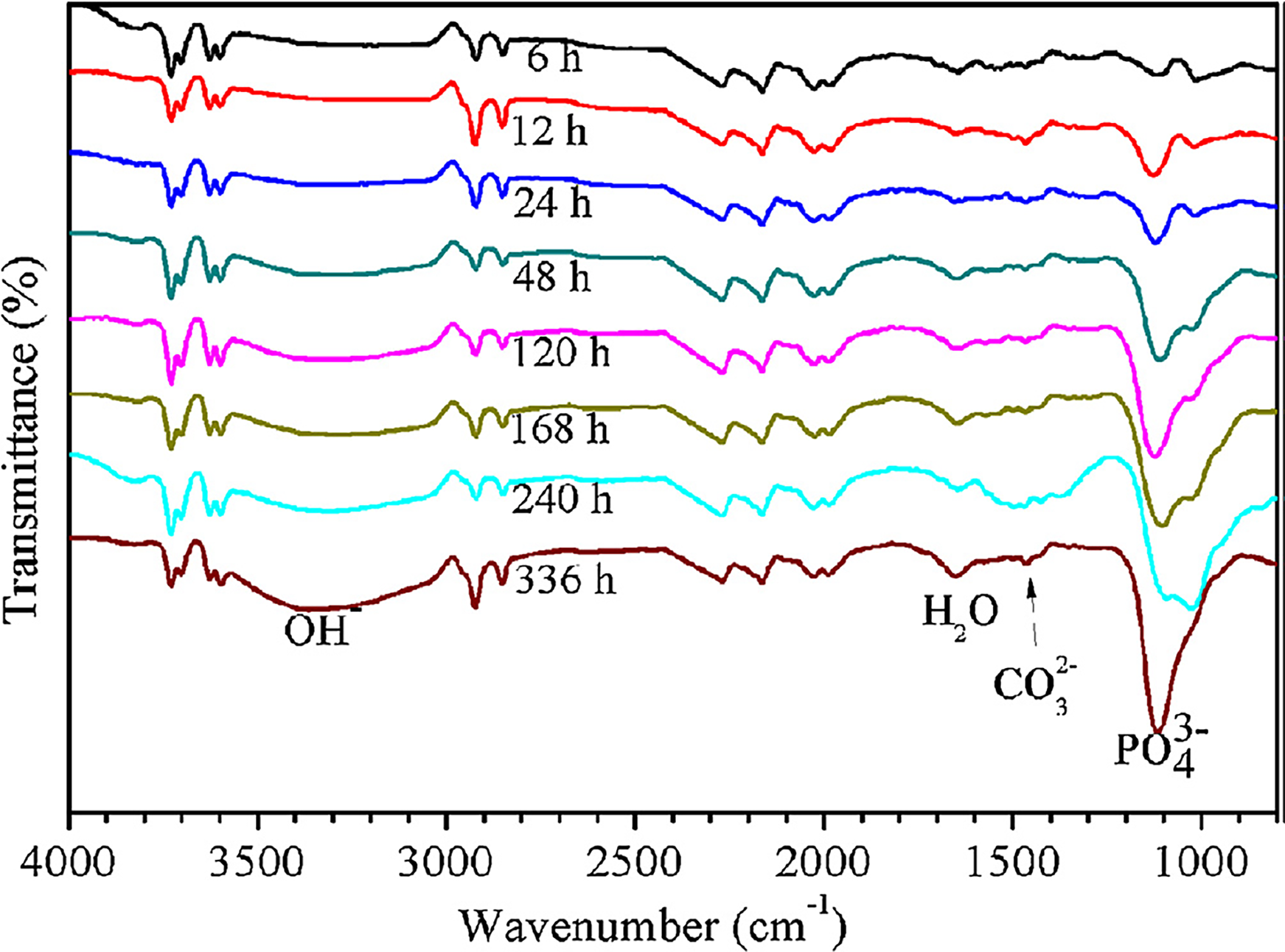
图 7 显示了纯 Zn 样品浸入 r-SBF 不同时间的 FTIR 光谱。 从 3600 到 3100 cm-1 的广泛吸收归因于羟基的 OH 伸缩振动。 1640 cm-1 处的峰归因于 H2O 弯曲振动和旋转模式,表明存在结晶水。 1470 到 1420 cm-1 之间的弱峰归因于溶液中一些吸收的碳酸根离子的伸缩振动。 1100 和 1025 cm-1 处的峰归属于磷酸盐的 P—O 不对称伸缩振动,随着浸泡时间延长至 336 小时,这种振动变得更强。 这些结果表明,随着浸泡时间的延长,锌样品表面形成了更多的磷酸盐,这证实了腐蚀产物中存在磷酸盐。
Fig. 7 displays the FTIR spectra of pure Zn sample immersed in r-SBF for different time. The broad absorption from 3600 to 3100 cm−1 was attributed to the O H stretching vibration of the hydroxyl group. The peak at 1640 cm−1 was attributed to H2O bending vibration and rotation modes manifested the existence of crystal water. Weak peaks between 1470 and1420 cm−1 were assigned to the stretching vibration of some absorbed carbonate ions from the solution. The peaks at1100 and 1025 cm−1 were assigned to the P—O asymmetric stretching vibration of phosphate, which became stronger with prolonging the immersion time to 336 h. These results indicated that more phosphates formed on the Zn sample surfaces with extended soaking time, which verified the presence of phosphate species in the corrosion products.